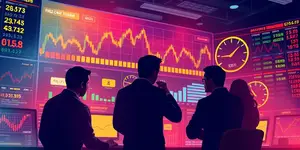
The phenomenon of a market bubble has captivated investors and historians for centuries. Understanding why asset prices soar far beyond their worth—and then crash—reveals deep truths about human nature and economic forces. By tracing episodes from 17th-century tulips to 21st-century cryptos, we uncover patterns that can guide smarter decisions today.
A market bubble emerges when asset prices detach from reality, driven by collective optimism and speculation. This detachment often leads to rapid price escalation not supported by fundamentals. The belief that prices will only climb fuels participation at all social levels, creating a self-reinforcing cycle.
Eventually, sentiment shifts and valuations collapse. The burst inflicts losses on latecomers and can destabilize entire economies.
Common triggers include:
Tulip Mania in the Netherlands (1636–1637) stands as an early testament to friction between desire and value. Bulbs changed hands for sums exceeding ten times a skilled artisan’s annual wage, only to lose 99% of their peak price within weeks. Despite its narrow reach, it highlighted the power of investor psychology and herd behavior.
Just over a century later, Britain’s South Sea Bubble (1720) and France’s Mississippi Bubble (1719–1720) dwarfed previous excesses. Shares rocketed as stories of overseas wealth captured imaginations. When reality intruded, fortunes vanished, and trust in public finance was shaken for decades.
The 19th century saw Canal Mania and Railway Mania in the UK, showcasing how infrastructure dreams can inflate expectations. In each case, speculative capital poured into ventures promising rapid growth, only to crater when traffic or revenue fell short.
Fast-forward to the 20th century: the Roaring Twenties stock surge ended in the 1929 crash, triggering the Great Depression. Later, Japan’s late-1980s real estate and equity boom gave birth to the “Lost Decades.” And at the dawn of the internet age, the Dot-com Bubble erased nearly 78% of NASDAQ’s value by 2002.
More recently, the US housing bubble of 2002–2006 precipitated a global financial crisis. As home prices plunged, foreclosures spiked and credit markets froze, illustrating economic and social impacts of bubbles with profound intensity. Today, cryptocurrency cycles and commodity swings remind us that speculative fervor never truly fades.
Despite differing contexts, every major bubble shares core drivers. Whether in 17th-century Holland or 21st-century blockchain platforms, similar forces converge. Excess liquidity chases novel stories, valuations detach, and end-of-cycle pressures surface once momentum wanes.
disconnect between asset price and value often signals the late phase of a bubble. When enthusiasm peaks, traditional valuation metrics—earnings, dividends, rent—fade into the background, replaced by speculative forecasts that assume endless growth.
These patterns illuminate why bubbles happen again and again. A new technology may offer genuine promise, but if credit and sentiment inflate irrationally, the path to correction is almost certain.
Burst bubbles inflict widespread pain: wealth evaporates, businesses fail, and unemployment rises. Yet, past episodes also delivered unexpected benefits, spurring investment and innovation during the boom. Understanding both sides is key to balanced policy and investment strategy.
History teaches us that bubbles are neither random nor unavoidable tornadoes. They follow discernible patterns rooted in psychology, policy, and innovation. Recognizing warning signs—such as valuation measures detached from earnings or irrational coverage by media—can help investors avoid the steepest losses.
Banks and regulators can employ preemptive policy and macroprudential regulation to moderate credit growth and address systemic risks. Encouraging greater transparency, strengthening capital buffers, and monitoring leverage ratios are practical steps that have arisen from past crises.
A mindful approach to innovation helps too. While new technologies offer real value, separating solid business models from hype is crucial. Engaging in thorough due diligence, stress testing assumptions, and diversifying portfolios can mitigate exposure to overvalued sectors.
Global coordination among regulators can help temper cross-border flows of speculative capital. Sharing data on leverage, asset exposures, and macroprudential measures can prevent risks from migrating between markets.
For individuals, adopting a long-term horizon, focusing on fundamentals and validating quality of cash flows rather than price action offers stronger protection. Setting clear investment goals and risk limits can curb the impulse to chase overvalued trends.
Market bubbles may recur, but their lessons remain evergreen. As we navigate evolving landscapes—from digital assets to green energy—anchoring decisions in sound analysis rather than emotion is vital. History does not merely recount past mistakes; it equips us with the tools to build a more stable future.
As financial landscapes evolve, so do the forms of bubbles. From collectible assets to complex derivatives, bubbles adapt. Yet the human penchant for optimism remains constant. By embedding historical awareness into modern practice, we can harness innovation responsibly and avoid cyclical pitfalls.
By understanding the causes, mechanics, and consequences of bubbles, investors and policymakers gain a compass for prudent action. Let the soaring peaks and dramatic falls of history guide us toward clearer thinking, steadier markets, and a shared commitment to long-term prosperity.
References













